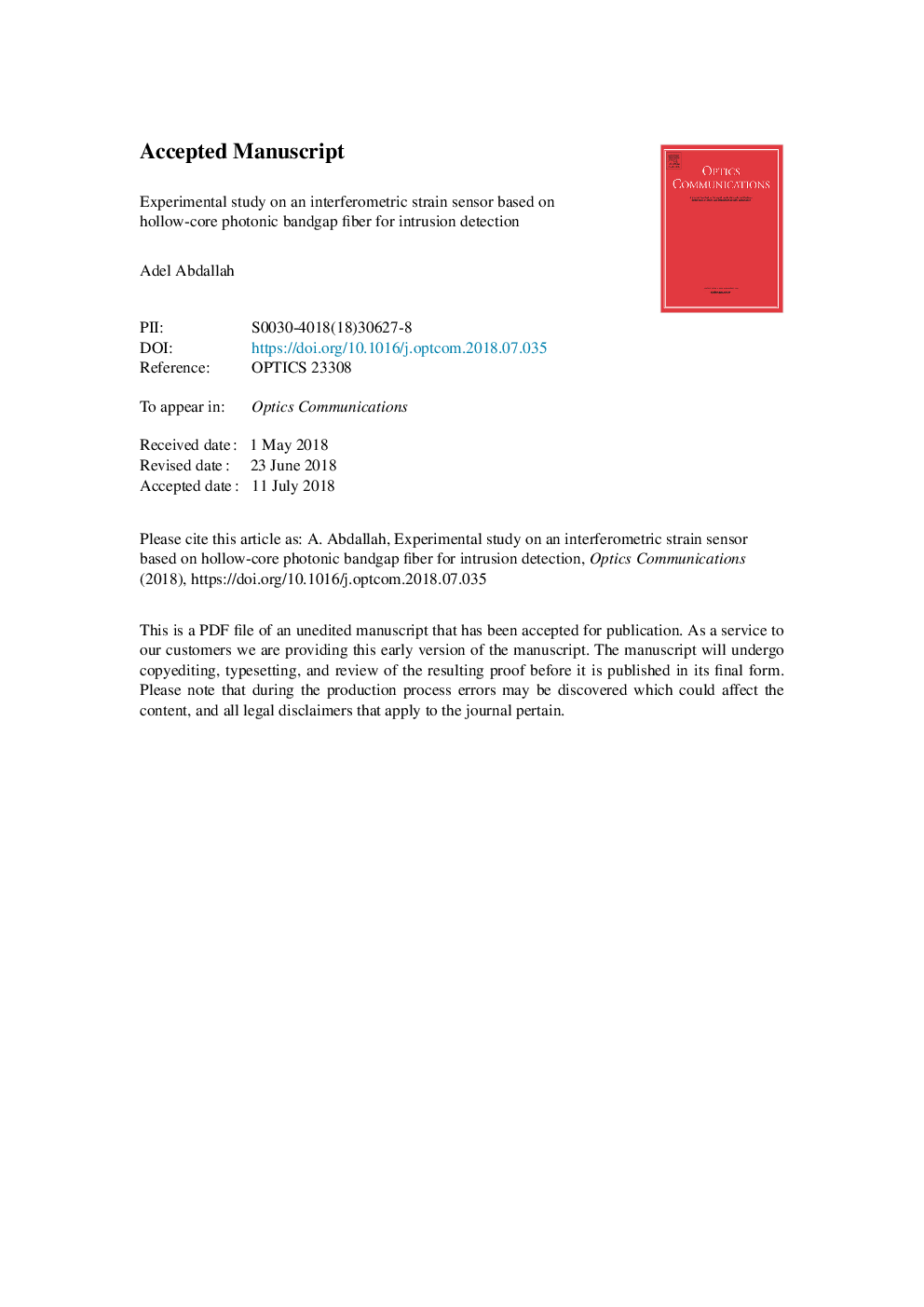| Article ID | Journal | Published Year | Pages | File Type |
|---|---|---|---|---|
| 7924538 | Optics Communications | 2018 | 17 Pages |
Abstract
In this paper, the design and preliminary performance results of a Mach-Zehnder interferometric (MZI) strain sensor based on hollow-core photonic bandgap fiber (HC-PBG) for intrusion detection are proposed. An experiment is conducted to test the system before deployment in the field. Firstly, to judge the necessity of using the HC-PBG, an experiment is performed to compare the normalized strain responsivity (NR) of the HC-1550 and the conventional SMF-28. By interchanging the investigated optical fibers as a sensing arm of the MZI, it is possible to compare the obtained results with a conventional standard silica fiber and the HC-PBG. The experimental results show that the NR of the HC-PBG is about 3.6 - 5.3 dB better than that of the SMF depending on the frequency in the frequency range 500 Hz to 2 kHz. Secondly, we concentrate our study and measurements on the HC-1550. A simulation of intrusion detection is introduced by using the proposed interferometric fiber-optic strain sensor to detect the dynamic strain induced phase shift as a result of varying the amplitude and frequency of the input signals to a PZT tube. The investigated input signal frequencies are from 500 Hz to 2 kHz. An experiment is performed to measure the induced strain from the PZT for different input voltages and frequencies, and using the phase generated carrier (PGC) demodulation technique for extracting the measured signal information. This technique is an effective way to test the performance and the functionality of the system in lab before the field trials. Experimental results show the importance of using HC-PBG for sensing applications and the ability of the system to effectively be used for borders monitoring and securing important facilities.
Related Topics
Physical Sciences and Engineering
Materials Science
Electronic, Optical and Magnetic Materials
Authors
Adel Abdallah,
